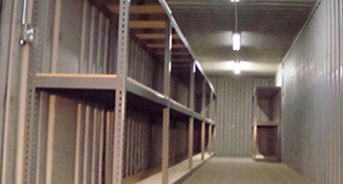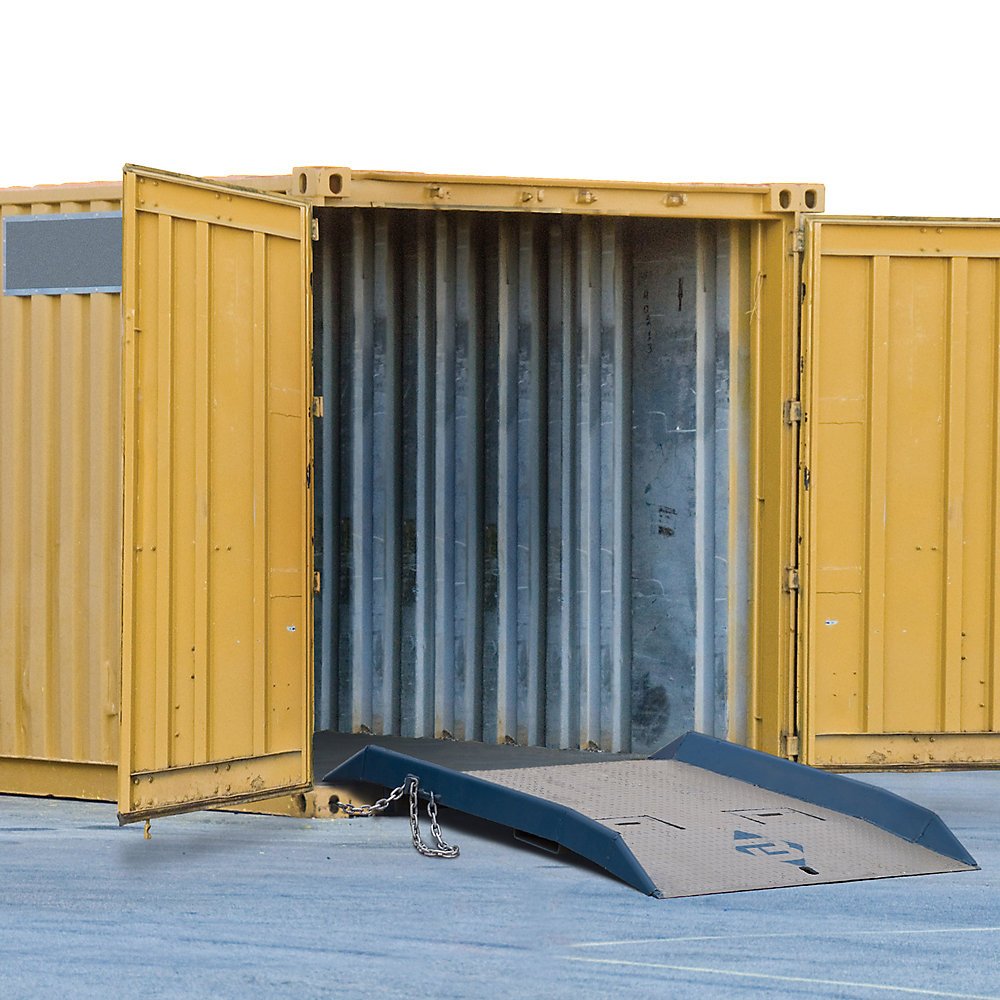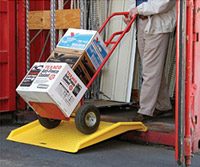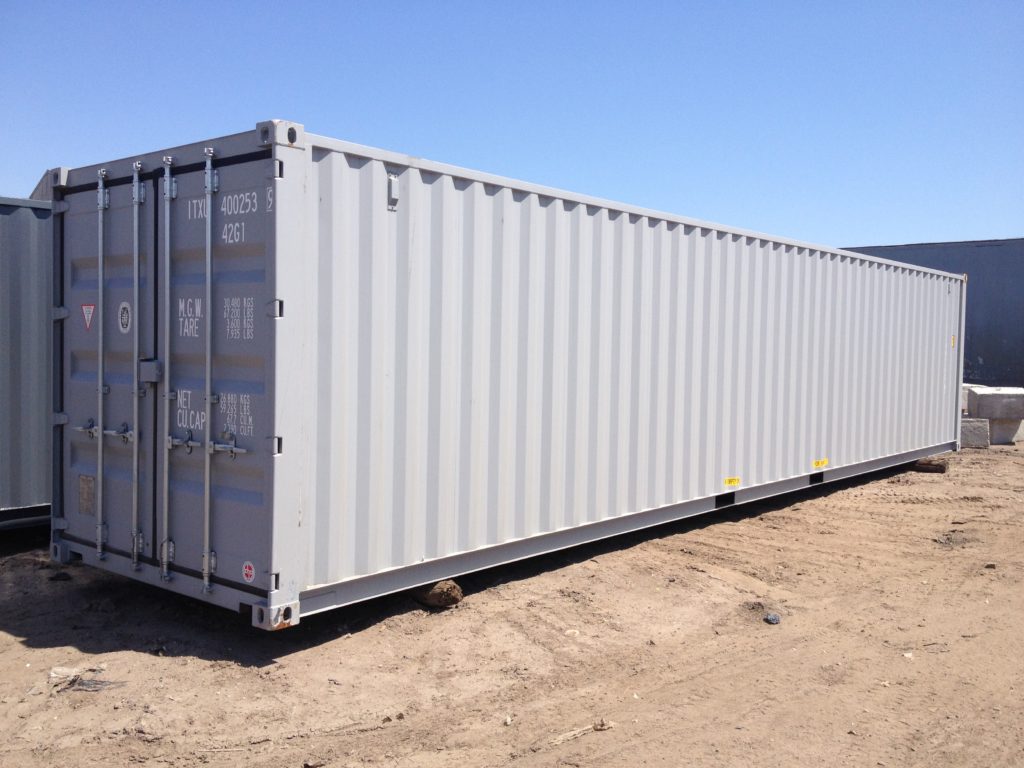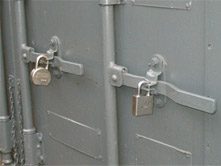Learn essential setup info for shipping container shelves. Aaron Supreme has you covered with shelving types, installation steps, and budget considerations.

Shipping containers are highly desirable for homeowners and various industries due to ease of customization and modification.
One of the best shipping container modifications is shelving installation.
Whether using your container as an office, pop-up shop, tiny home, or a simple storage solution, shelves can help you organize and maximize the available space.
To help you make the most of your container’s footage, let’s cover the essential information you need to know about shipping container shelves.
3 Materials Used for Shipping Container Shelves
- Metal Shelves
Metal shelves are robust, durable, and often rust-resistant, especially if galvanized. They come in various sizes to fit different container dimensions.
Metal shelves are useful for the following industries and items:
- Construction Industry: Utilize metal shelves for heavy tools and machinery parts.
- Manufacturing Industry: Metal shelves are ideal for storing raw materials, finished products, and heavy equipment.
- Government & Municipality: Store essential documents, equipment, and emergency supplies.
- Office Container: Store files, office equipment, and supplies on a sturdy surface.
- Wooden Shelves
Wooden shelves offer a rustic aesthetic and come in various sizes and wood types. Wooden shelves are useful for the following industries and items:
- Retail Industry: Create appealing product displays.
- Schools: Store books, educational materials, and art supplies.
- Food and Beverage Industry: Organize non-perishable food items or dining essentials.
- Homeowners: Wooden shelves can add a touch of elegance to home storage, making them ideal for personal items, books, and decor.
- Plastic Shelves
Lightweight and rust-resistant, plastic shelves are easy to clean and maintain. Plastic shelves are useful for the following industries and items:
- Schools: Store lightweight supplies and materials.
- Food and Beverage Industry: Plastic shelves can support light kitchen tools like spoons and spatulas or cleaning supplies.
- Office Container: Suitable for storing stationery, light office supplies, and decorative items.
2 Types of Shipping Container Shelves
- Adjustable Shelves
Adjustable shelves offer flexibility since they can be adjusted to different heights to accommodate items of various sizes. Adjustable shelves are useful for the following industries and items:
- Retail Industry: Display products of different sizes.
- Government and Municipalities: Store varying sizes of documents and equipment.
- Homeowners: Adjustable shelves provide versatility for changing storage needs, making them ideal for seasonal items or decor.
- Removable/Storable Shelving Options
Removable or foldable shelves are available for those requiring flexibility in their storage solutions. These can be taken down when unused, freeing up space inside the container. Some designs also allow the shelves to be adjusted or reconfigured based on changing needs.
Climate Considerations for Shelf Materials
Different climates can have varying effects on the materials of the shelves. It’s essential to choose shelving materials suitable for your region’s climate and consider treatments or coatings that can enhance their durability.
Wooden shelves might be more susceptible to mold or rot in humid climates. To protect the wood from humidity, apply coats of polyurethane or varnish.
On the other hand, metal shelves might rust if not properly treated, especially in coastal areas with salty air. When using metal shelves in coastal environments, consider which type of metal will hold up best against corrosion.
Weight Limits of Different Shelves
3-Level Heavy-Duty Hanging Shelves
At Aaron Supreme, we sell 3-level hanging shelves.
- Weight Limit: Typically in the range of 800-1200 lbs per shelf.
- Items: Bulk items, heavy tools, large containers of supplies, and equipment.
Metal Shelves
- Weight Limit: Typically up to 1000 lbs or more per shelf.
- Items: Heavy tools, machinery parts, bulk raw materials, large boxes of documents, and heavy equipment.
Wooden Shelves
- Weight Limit: Generally between 200-500 lbs per shelf.
- Items: Medium-weight boxes, household goods, books, decorative items, retail products, and smaller tools.
Plastic Shelves
- Weight Limit: Up to 150 lbs per shelf.
- Items: Cleaning supplies, gardening tools, stationery, light kitchen tools, and other lightweight items.
Self-Installation Steps and Recommendations
Shipping container shelves are generally easy to install. Most shelving systems come with brackets that can be bolted to the container walls.
The ease of installation often depends on the type of shelf and the tools available. Metal shelves might require drilling, while some plastic shelves can simply be snapped into place.
1. Measure the Space
Before purchasing or building shelves, measure the interior of your container to ensure the shelves will fit.
2. Choose the Right Material
Depending on what you’ll be storing, choose a material that can bear the weight and withstand the conditions inside the container.
3. Mark the Wall
Mark the spots where you’ll attach the brackets or supports. This allows you to properly position the shelves the first time.
4. Install Brackets
Bolt or screw the brackets to the container walls. Ensure they are level.
5. Place the Shelves
Once the brackets are securely in place, lay down the shelves. You might need to secure metal and wooden shelves with screws.
6. Safety First
Always wear protective gear, like gloves and safety glasses, when installing shelves. If you’re unsure about the installation process, consider hiring a professional.
Security and Locking Mechanisms
Ensuring the security of items stored in your shipping container is paramount. Here are specific mechanisms to enhance the safety of your shelved items:
- Lockable Cabinets: Some shelving units come with built-in lockable cabinets. These are ideal for storing valuable items or sensitive documents. The locks can range from traditional key locks to more advanced digital or combination locks.
- Caged Storage: For oversized items or bulk storage, consider caged storage units that can be locked. These are especially useful in industrial settings where tools or equipment need to be secured.
- Shelving with Security Bars: Some shelves come with horizontal security bars that can be locked into place, preventing items from being easily removed from the shelf.
- Surveillance: Consider installing security cameras or surveillance systems if the container is used for high-value items. Security cameras not only deter theft but also provide evidence in case of any security breaches.
- Alarm Systems: Installing motion detectors or door alarms can alert you to unauthorized access to the container.
Cost and Budgeting
Setting up shelving in a shipping container requires a financial investment, and understanding the costs involved can help you budget effectively:
Material Costs: Metal shelves, especially heavy-duty or rust-resistant varieties, are typically more expensive than wooden or plastic shelves. Custom-made wooden shelves or those with added features like lockable cabinets will also come at a premium. If you design custom wooden shipping container shelves, find free wood and save money on your project.
Installation Costs: While many opt for a DIY approach, hiring professionals can ensure the shelves are installed correctly and securely. At Aaron Supreme, we offer installation services for our 3-level hanging shelves. You can request a quote for installation services and container delivery fees. Professional installation may be worth the cost of providing proper installation the first time.
Security Enhancements: Adding security features like locks, cages, or surveillance systems increases the overall cost; however, investing in security accessories reduces the potential for theft, saving you money in replacement costs long term.
Maintenance and Replacement: Consider the long-term costs of maintaining the shelves, especially in challenging climates. Wooden shelves might need treatments to prevent rot, while metal shelves might require rust-prevention measures.
Safety Precautions
Ensuring safety while setting up and using shipping container shelves is crucial. Here are six specific safety tips:
- Anchoring Shelves: Always anchor shelves securely to the walls of the container to prevent them from tipping over, especially when loaded with heavy items.
- Load Distribution: Distribute weight evenly across the shelves. Avoid placing heavy items on the top shelf so the shelving unit is not top-heavy and unstable.
- Regular Inspections: Periodically inspect the shelves for any wear, tear, or damage. This includes checking for rust on metal shelves, rot on wooden shelves, or cracks in plastic shelves.
- Use Proper Equipment: When installing or loading shelves, use proper equipment like gloves, safety glasses, and, if necessary, hard hats. Use ladders or step stools to reach higher shelves safely.
- Clear Pathways: Keep the area around the shelving clear of obstacles to prevent tripping hazards when accessing items.
- Emergency Protocols: Have emergency protocols in place, such as a first aid kit on hand and clear signage indicating emergency exits, especially if the container is used for commercial or industrial purposes.
Wrapping Up
Shipping container shelves are a simple yet effective way to maximize the storage potential of your container. With various materials and sizes available, there’s a shelving solution for every need and industry.
Contact Aaron Supreme today to purchase your first or next shipping container shelves!

